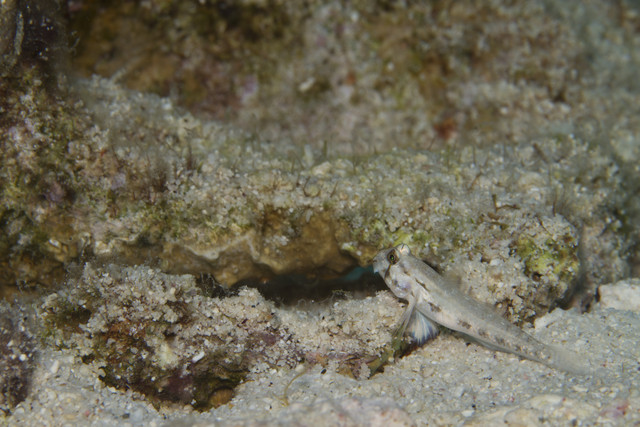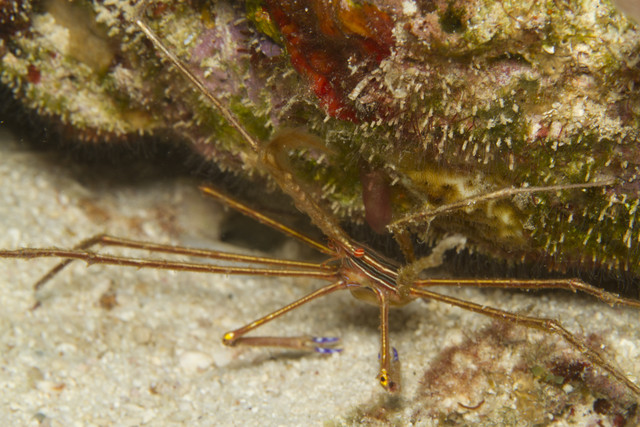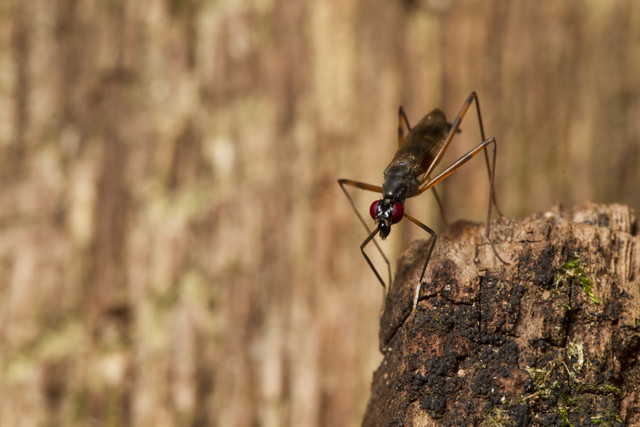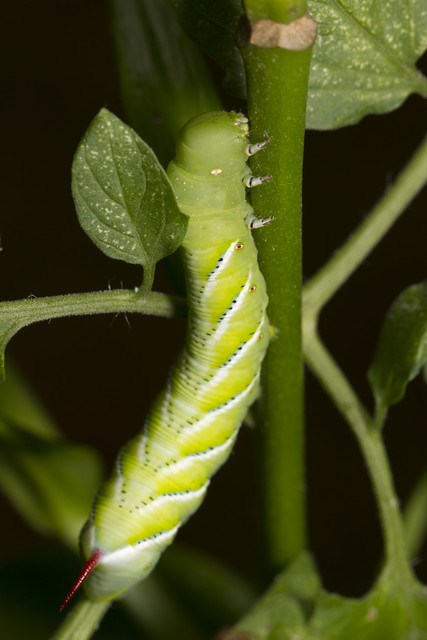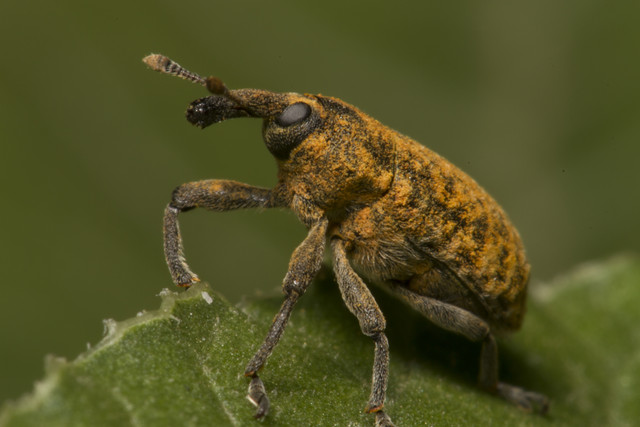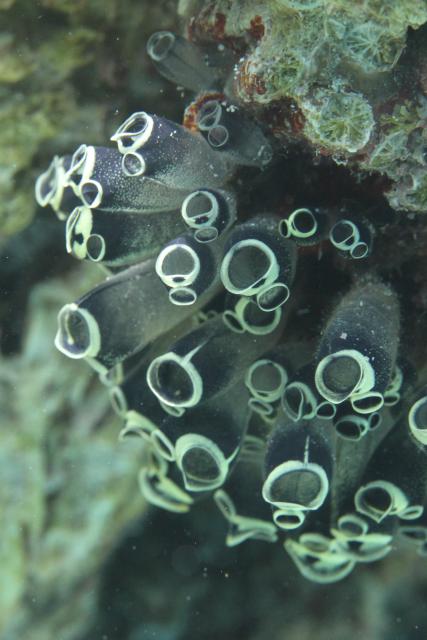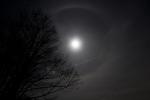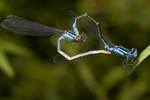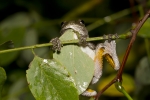flash
Caribbean Explorer: Caribbean Reef Octopus Variety Pack
ktuli — Fri, 10/14/2011 - 16:25
Ok - it took Anya and I four dive trips to finally get to see an octopus. Fortunately, we saw plenty of octopodes on this trip, so I got plenty of good shots. So rather than spend more time typing, I'll just share a handful of shots from our first night dive where we had out first real octopus encounter (technically we saw some during the afternoon dives, but they were hiding, so it doesn't count like this).
This is a Caribbean Reef Octopus (Octopus briareus), which you can tell by that fantastic coloration of bluish-green mottled with reddish-brown.
Mouse-over the thumbnails to view the larger image.
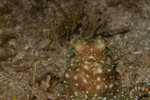 |
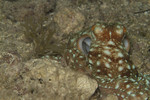 |
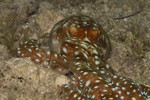 |
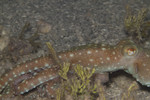 |
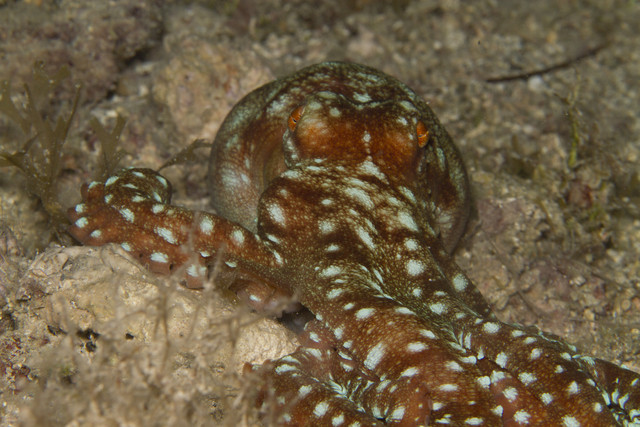
|
Technical Data: Canon EOS 7D, Canon EF 100mm f/2.8L Macro IS USM, 1/120th sec at f/16. Image Stabilization on. ISO 100. Ikelite Housing and Port with Ikelite 161 Strobe in TTL Mode. Raw conversion in Photoshop CS5.
That alone was worth the price of admission!
- Bill
Caribbean Explorer: Unidentified Blenny
ktuli — Thu, 10/13/2011 - 19:09
We'll continue today with the tiny little reef fish. Like yesterday's Goldspot Goby, if you slow down and pay attention, these diminutive fish are quite numerous just about everywhere you look on the reef.
At first, I thought today's fish was a Secretary Blenny (Acanthemblemaria maria), but after looking more closely, I'm not so sure. It is definitely in the Blenny family (Acanthemblemaria spp.), but it is lacking the yellow irises and white bar behind the eyes that the Secretary Blennies possess.
Regardless, the behavior is the same - each seems to live in the holes in corals and sponges that are left by various worms. They usually sit in these holes with just their heads protruding, until a morsel of food drifts by, then they dart out, grab the food, and then return to their hole with lightning speed.
Technical Data: Canon EOS 7D, Canon EF 100mm f/2.8L Macro IS USM, 1/120th sec at f/16. Image Stabilization on. ISO 100. Ikelite Housing and Port with Ikelite 161 Strobe in TTL Mode. Raw conversion in Photoshop CS5.
Looking at the EXIF data, this shot was taken at the lens' minimum focusing distance, which produces a 1:1 magnification. That means that the image is 22.3mm x 14.9mm, which makes that fish pretty darn tiny.
Just another treasure of the reef if you know where to look.
- Bill
Caribbean Explorer: Goldspot Goby
ktuli — Wed, 10/12/2011 - 20:24
Ok - till slogging my way through hundreds of RAW conversions, so just stopping by tonight to post another quick shot. Today, we have a Goldspot Goby (Gnatholepis thompsoni). These are small little fish - about an inch or two max, that live on the sandy bottoms of the reef. If approached slowly, they will sometimes sit nicely like this little fellow and allow for a decent photo.
Technical Data: Canon EOS 7D, Canon EF 100mm f/2.8L Macro IS USM, 1/120th sec at f/16. Image Stabilization on. ISO 100. Ikelite Housing and Port with Ikelite 161 Strobe in TTL Mode. Raw conversion in Photoshop CS5.
Stay tuned! The octopodes are coming soon!
- Bill
Caribbean Explorer: Yellow-Lined Arrow Crab
ktuli — Wed, 10/12/2011 - 07:16
Well, I'm back! I have a bunch of photos still to process (not nearly as many as the Wakatobi trip because I decided going in that I was going to not use burst mode). Turns out, I came home with 821 photos, and the first round of culling brought me down to 602, so a much higher rate of keepers than before. I can't really spend much time on this post, so I'll just get to the photo...
Technical Data: Canon EOS 7D, Canon EF 100mm f/2.8L Macro IS USM, 1/120th sec at f/16. Image Stabilization on. ISO 100. Ikelite Housing and Port with Ikelite 161 Strobe in TTL Mode. Raw conversion in Photoshop CS5.
Today's subject is a Yellow-Lined Arrow Crab (Stenorhynchus seticornis). They are a fairly common resident of the reef, but I really love the patterns and colors they possess - those beautiful lines, and the strange red eyes, and even those odd bluish claws.
Stay tuned as I have some really awesome photos coming!
- Bill
Crab Spider on Dahlia
ktuli — Mon, 09/19/2011 - 20:05
Just another quick photo to share again today... I've been putting in a ton of extra hours at work, and it is just so mentally draining that it is having a physical toll too. Can't wait to get to this trip coming up and relax for a bit.
Anyway, it has been a bit since we've done a spider shot, so we'll take a look at a cool crab spider on a dahlia bud. I'd seen (and shot) several of these crab spiders this summer, and having this one on this richly colored dahlia was just so nice. I probably should crop it differently, but for now, here's the shot right out of the camera (with RAW processing of course)....
Technical Data: Canon EOS 7D, Canon EF 100mm f/2.8L Macro IS USM, 1/250 sec at f/16. Canon Speedlight 580EX II flash in auto mode and wireless control. Image Stabilization on. ISO 100. RAW processing and cropped in Adobe Camera Raw.
I think after jumping spiders, crab spiders are my second favorite variety of spiders.
- Bill
Spooky Fly
ktuli — Mon, 09/12/2011 - 19:26
Another thing I spotted when we were out on our little hike at Round Hill Park (see yesterday's post) was this fly.
I have no idea on the species, but if the government is going to make spy bugs or if an alien race of space bugs invades, this is what I would expect them to look like....
Technical Data: Canon EOS 7D, Canon EF 100mm f/2.8L Macro IS USM, 1/200 sec at f/16. Canon Speedlight 580EX II flash in auto mode and wireless control. Image Stabilization on. ISO 100. RAW processing in Adobe Camera Raw. Round Hill Park, Elizabeth, PA.
I only got off one shot of this guy as it struck this pose, but those huge red eyes just screamed out to me and I got in as close as I could and fired off a single shot before it flew away and I couldn't find it again.
... probably to report back to the mothership.
- Bill
Spined Micrathenas
ktuli — Sun, 09/11/2011 - 19:31
These spiders are often found on relatively large webs that they spin across paths through the woods. Interestingly enough, they often build them in a diagonal manner such that you are usually able to duck under them on one side without disturbing the web or the spider - if you see them first of course!
We took a walk through the woods out at Round Hill Park about a thirty-minute drive from our house, and while the day was swelteringly hot, we had no luck finding much of anything else other than these spiders...
But, they're pretty cool spiders once you take a moment to look at them. They look like something you'd expect to see in a tropical jungle, not a deciduous forest here in PA.
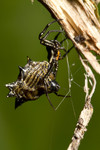 |
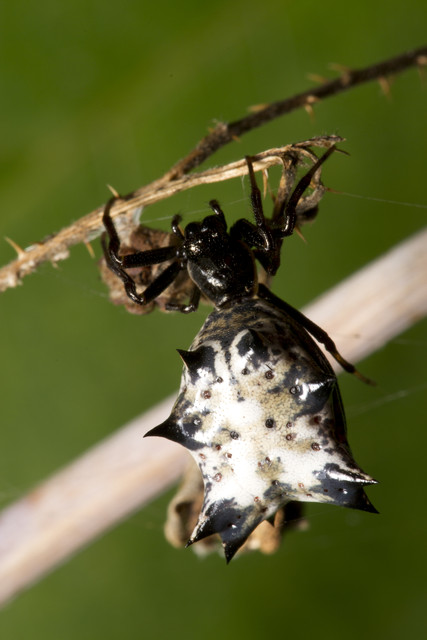 |
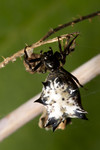 |
|
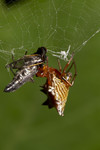 |
Technical Data: Canon EOS 7D, Canon EF 100mm f/2.8L Macro IS USM, 1/200 sec at f/16. Canon Speedlight 580EX II flash in auto mode and wireless control. Image Stabilization on. ISO 100. RAW processing in Adobe Camera Raw. Round Hill Park, Elizabeth, PA.
I am pretty sure that all of these are Spined Micrathenas (Micrathena gracilis). The only one I'm not 100% about is the rusty brown colored one. Most photos I've found of the others are all jet black like the other two.
I really like the detail in the abdomens in these shots - especially in the ones where you are able to see the silk still coming out of the spinerettes. Those concentric rings leading out from the spinerettes really made the abdomens look like they were made of stone - and from what I've read about these spiders, their abdomens with those spines are hard enough that you can actually puncture your flesh if you try to smash the spider by hand.
Pretty cool little spiders.
- Bill
Sphinx Caterpillar
ktuli — Thu, 09/08/2011 - 18:40
I am not 100% certain on the species of this caterpillar, but I am pretty sure it is in the Ceratomia family. This is a group of sphinx hawkmoths.
The species I am leaning towards most with this individual is the Waved Sphinx (Ceratomia undulosa).
This is the moth of Silence of the Lambs fame.
My doubt on the identification comes from the lack of the white stripe on the face of the caterpillar, and the reddish color to the tail spike/horn. But everything else is spot on and I haven't been able to find another species that would fit better.
Technical Data: Canon EOS 7D, Canon EF 100mm f/2.8L Macro IS USM, 1/100 sec at f/8. Canon Speedlight 580EX II flash in auto mode and wireless control. Image Stabilization on. ISO 100. RAW processing in Adobe Camera Raw.
I probably should have went for more depth of field with a smaller aperture, but I was trying to also keep the background from being pitch black (though even that didn't work out so well). As a result, the head of the caterpillar is in clarity while the tail starts to blur out a bit.
I have a couple other angles to share eventually, but while you'd probably expect a caterpillar to be an easy subject to work with, it was actually very difficult to get it to move into good positions, and to stay still once there. As with all caterpillars, they only have six true legs (seen here colored white) and the rest are merely fleshy apendages that have sticky pads on the end of them - making them very difficult to detach unless they want to.
A challenging, yet very cool subject.
- Bill
Boll Weevil
ktuli — Wed, 09/07/2011 - 17:59
Been having a hard time coming up with things to write about, so just going to share another photo today. Our subject for this one is a boll weevil of some sort.
Technical Data: Canon EOS 7D, Canon EF 100mm f/2.8L Macro IS USM with Kenko Teleplus PRO 300 "DG" AF 2x Teleconverter, 1/250 sec at f/16. Canon Speedlight 580EX II flash in auto mode and wireless control. Image Stabilization on. ISO 100. RAW processing in Adobe Camera Raw.
- Bill
Wakatobi: Tunicates
ktuli — Tue, 09/06/2011 - 19:44
Just stopping by to share another shot of some more tunicates.
Technical Data: Canon EOS 7D, Canon EF 100mm f/2.8L Macro IS USM, 1/170th sec at f/11.3. Image Stabilization on. ISO 2000 (Auto). Ikelite Housing and Port with Ikelite DS161 Strobe in TTL Mode. No post production.
- Bill


